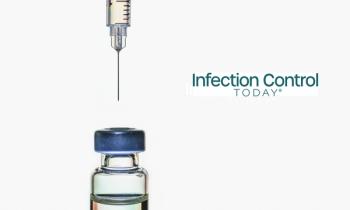
- Infection Control Today, March/April 2025 (Vol. 29 No.2)
- Volume 29
- Issue 2
Silent Saboteurs: Managing Endotoxins for Sepsis-Free Sterilization
Invisible yet deadly, endotoxins evade traditional sterilization methods, posing significant risks during routine surgeries. Understanding and addressing their threat is critical for patient safety.
Imagine a patient undergoing what should be a routine surgery. The instruments used have been carefully sterilized, but lurking on their surfaces are microscopic endotoxins—heat-resistant and undetectable by standard sterilization methods—posing a hidden threat to patient safety. The instruments used have been sterilized, and the procedure goes smoothly, but days later, the patient develops a severe, unexplained infection.
The culprit? Invisible, heat-resistant endotoxins lurking on supposedly sterile medical devices. These silent saboteurs pose a grave threat to patient safety, capable of triggering fevers, multiorgan failure, and even fatal septic shock. Despite rigorous sterilization protocols, endotoxins persist in health care settings, demanding strict regulatory oversight and innovative mitigation strategies. Understanding the nature of endotoxins and their impact on sterilization practices is crucial in ensuring patient safety and preventing deadly infections.
What Are Endotoxins?
Endotoxin lipopolysaccharides (LPSs) trigger a vast spectrum of biological responses, both harmful and beneficial to the host organism.1 They are commonly found in the environment, particularly in the gastrointestinal tract, and are the most significant pyrogens in drugs and medical devices. Endotoxins can be transmitted through medical equipment, intravenous medications, saline solutions, implants, and sterile water.2
LPS, present in the outer membrane of gram-negative bacteria, is heat-stable and released upon bacterial lysis or death.3 LPSs are crucial to bacterial organization and stability.4 Structurally, endotoxins consist of 3 regions: O-specific antigen, core polysaccharide, and lipid A. These components are responsible for toxic effects, including fever, multiorgan failure, sepsis, and septic shock.5 Although the O antigen is the outermost part and nontoxic, the core polysaccharide varies among bacterial strains.6 The lipid A portion is highly toxic and anchors the endotoxin to the bacterial membrane.6 Although endotoxin structure is largely conserved, it can undergo modifications in response to environmental changes.6
History and Research on Endotoxins
In the early 1800s, researchers speculated that microscopic organisms could be transmitted through soil and air. Louis Pasteur later demonstrated the role of microbes in infectious diseases.7
- 1809-1822: Sir John Burdon-Sanderson confirmed von Haller’s findings, proving that putrid fluids caused animal fever and disease.7
- 1822: François Magendie linked putrid water conditions to severe illnesses such as typhoid fever and cholera.7
- 1856: Peter L. Panum observed that injections of putrid fluid induced fever.7 Later in 1856, Panum demonstrated that the fever-inducing substances derived from putrid matter were heat-stable and water-soluble.9
- 1880: Julius Wagner-Jauregg experimented with inducing fevers using endotoxins, later earning a Nobel Prize for his research on artificial fever induction.8
- 1884: Hans Christian Gram developed the Gram staining technique.9
- 1890s: Eugenio Centanni successfully isolated endotoxins from bacterial lysates, confirming their heat stability.9
- 1892: Richard Pfeiffer distinguished between heat-labile exotoxins and heat-resistant endotoxins and coined the term endotoxin.7,9
Although endotoxin injections evoke memories of unethical research practices, gram-negative bacterial endotoxins have been used in medical treatments for more than a century. Initially, they were used to induce fever to treat infections such as arthritis, eye inflammation, and cancer.8
By the 1940s, researchers sought to understand endotoxin tolerance through controlled administration.8 Findings from studies revealed that humans are highly sensitive to endotoxin effects.8 Today, purified LPS is a critical tool in immunology research, helping to develop better treatments for septicemia.7
Impact of Endotoxins on the Body
The US Food and Drug Administration (FDA) identifies multiple sources of endotoxin contamination, including solvent water, sterilization water, packaging materials, and manufacturing equipment.10 Contamination can occur at any point in the reprocessing cycle, including cleaning, sterilization, and storage, making consistent monitoring essential.10 Medical equipment, including surgical instruments, catheters, and implantable devices, can become contaminated when exposed to water sources that contain endotoxins, potentially resulting in patient exposure.10
Once endotoxins enter the bloodstream (endotoxemia), they trigger severe inflammatory responses. The immune system recognizes endotoxins as foreign threats, activating a powerful immune reaction that can cause fever, diarrhea, and, in extreme cases, septic shock.6 Endotoxins contribute to bacterial infections such as typhoid fever, tularemia, and the plague. They also play a significant role in hospital-associated infections caused by gram-negative bacteria, including Escherichia coli, Proteus, Pseudomonas aeruginosa, Enterobacter, Serratia, and Klebsiella.11
Despite extensive research, the exact role of circulating endotoxins in septic shock remains debated. LPSs function as alarm molecules in the innate immune system, signaling potential bacterial invasions. Although small amounts of LPS help the immune system fight infections by coordinating antimicrobial responses, large-scale endotoxin release can overwhelm the body, leading to widespread inflammation, tissue damage, organ failure, and, in severe cases, death.12
Endotoxins and Sterile Processing
Endotoxins persist on sterile biomedical devices because sterilization processes deactivate microorganisms rather than eliminate them entirely. Highly heat-resistant endotoxins can survive regular sterilization methods because most standard techniques, such as steam and chemical sterilization, effectively kill bacteria but do not eliminate the heat-stable endotoxin molecules they release. This resilience necessitates specialized
decontamination strategies to prevent patient exposure. The only proven method to destroy them is dry heat at 250 °C for 30 minutes or 180 °C for 3 hours, which is not feasible for many polymeric and metallic medical devices.13 As a result, endotoxins may remain on surgical instruments and implants, posing infection risks to patients.
The FDA has implemented essential regulations about restricting endotoxins in medical devices. These regulations have significant implications for medical device manufacturers, as they depend on the device’s intended application and interaction with bodily surfaces, cavities, and fluids.14 In sterile processing, screw caddies and implant plates undergo multiple rounds of cleaning and sterilization before being used on a patient. Some sizes may not be used for years.
The American National Standards Institute (ANSI)/Association for the Advancement of Medical Instrumentation (AAMI) ST108 standard provides a regulatory framework for water quality in sterile processing, ensuring that endotoxin contamination is minimized.15 This standard categorizes water into utility water, critical water, and steam, with strict contamination thresholds. Poor water quality can result in device malfunctions, toxic residue on implants, patient infections, and pyrogenic reactions.15
To comply with ANSI/AAMI ST108, sterile processing departments must implement robust water purification strategies, including reverse osmosis, deionization, UV disinfection, and ultrafiltration. Monthly endotoxin testing is recommended for all reprocessing areas, including steam, ultrasonic, mechanical washers, and final rinse water.15 Additionally, in-line infection control filtration is crucial for removing endotoxins that sterilization alone cannot eliminate. Compliance with ANSI/AAMI ST108 is critical in preventing endotoxin-related infections and ensuring patient safety by addressing water quality at every stage of the reprocessing cycle.
Conclusion
Endotoxins pose a significant risk to patient safety, particularly in medical device sterilization. Although extensive research has improved our understanding of endotoxin mechanisms, challenges remain in eliminating them from health care environments. Advancements in detection and decontamination methods are crucial in minimizing endotoxin-related infections.
By complying with strict regulations such as ANSI/AAMI ST108 and improving sterilization protocols, sterile processing departments can mitigate the risks associated with endotoxin contamination, ultimately enhancing patient outcomes. Future research into advanced filtration technologies, improved endotoxin detection methods, and novel sterilization techniques will be essential in further reducing endotoxin-related risks in health care settings.
References
- Galanos C, Freudenberg MA, Matsuura M. Mechanisms of the lethal action of endotoxin and endotoxin hypersensitivity. In: Friedman H, Klein TW, Nakano M, Nowotny A, eds. Endotoxin. Springer; 1990:603-619.
- Williams DF, ed. The Biomaterials: Silver Jubilee Compendium. Elsevier; 2011.
- Endotoxin. Merriam-Webster. Accessed February 3, 2025. https://www.merriam-webster.com/dictionary/endotoxin
- Ongkudon CM, Chew JH, Liu B, Danquah MK. Chromatographic removal of endotoxins: a bioprocess engineer’s perspective. Int Sch Res Notices. 2012;1:649746.
- Das AP, Kumar PS, Swain S. Recent advances in biosensor-based endotoxin detection. Biosens Bioelectron. 2014;51:62-75. doi:10.1016/j.bios.2013.07.020
- Pusterla T. What are endotoxins? BMG Labtech. March 24, 2022. Accessed February 3, 2025. https://www.bmglabtech.com/en/blog/what-are-endotoxins/
- History of LPS research. FUJIFILM Wako Chemicals. August 3, 2020. Accessed February 3, 2025. https://www.wakopyrostar.com/blog/kit-lal/post/history-of-lps-research/
- Bahador M, Cross AS. From therapy to experimental model: a hundred years of endotoxin administration to human subjects. J Endotoxin Res. 2007;13(5):251-279. doi:10.1177/0968051907085986
- Min H. The history and evolution of endotoxin testing. Charles River Microbial Solutions. January 22, 2025. Accessed February 3, 2025. https://www.rapidmicrobiology.com/news/a-q-a-on-usp-recombinant-innovation-and-future-trends
- The impact of endotoxin on the human body. FUJIFILM Wako Chemicals. July 29, 2024. Accessed February 3, 2025. https://www.wakopyrostar.com/blog/post/the-impact-of-endotoxin-on-the-human-body/
- Nash AA, Dalziel RG, Fitzgerald JR. Mims’ Pathogenesis of Infectious Disease. ScienceDirect; 2016.
- Opal SM. Endotoxins and other sepsis triggers. Contrib Nephrol. 2010;167:14-24. doi:10.1159/000315915
- Silhavy TJ, Kahne D. Overview of the bacterial envelope. In: Bacterial Endotoxins: Structure, Function, and Role in Disease. Woodhead Publishing; 2011:1-50.
- Goveia VR, Mendoza IYQ, Guimarães GL, et al. Endotoxins in surgical instruments of hip arthroplasty. Rev Esc Enferm USP. 2016;50(3):405-410. doi:10.1590/S0080-623420160000400005
- ANSI/AAMI ST108: its impact on sterile processing. Nephros blog. November 18, 2024. Accessed February 3, 2025. https://www.nephros.com/blog/ansi-aami-st108-its-impact-on-sterile-processing/
Articles in this issue
Newsletter
Stay prepared and protected with Infection Control Today's newsletter, delivering essential updates, best practices, and expert insights for infection preventionists.






